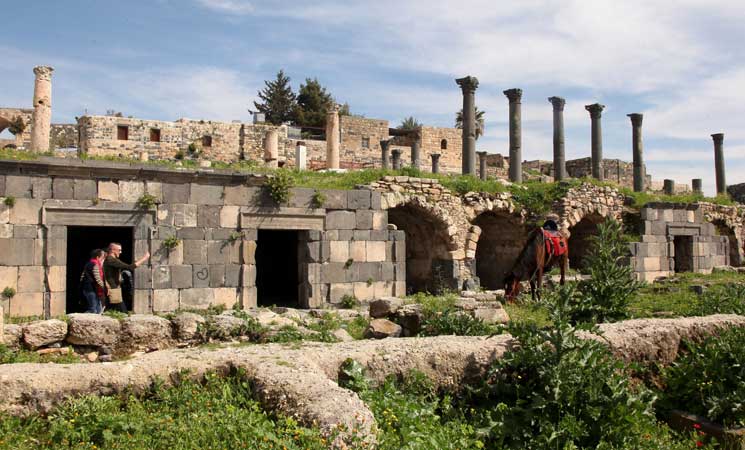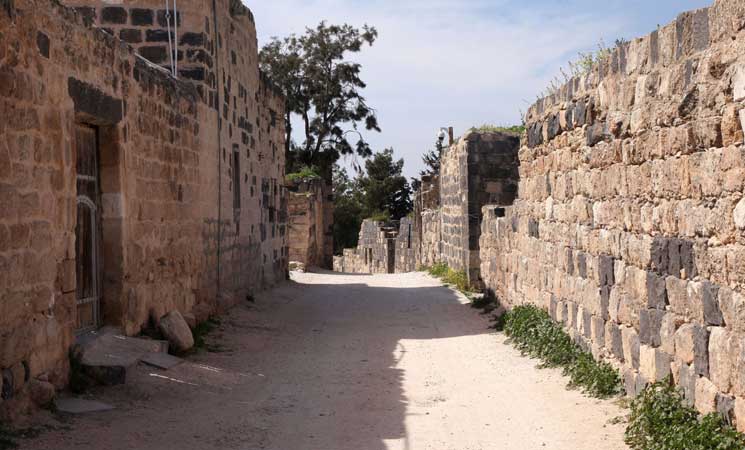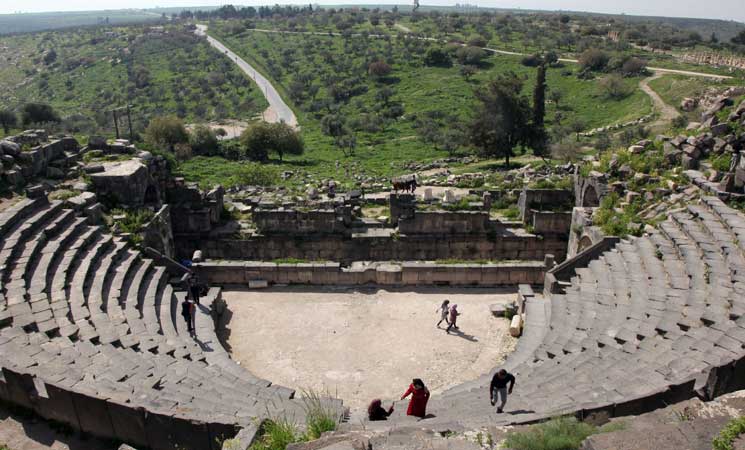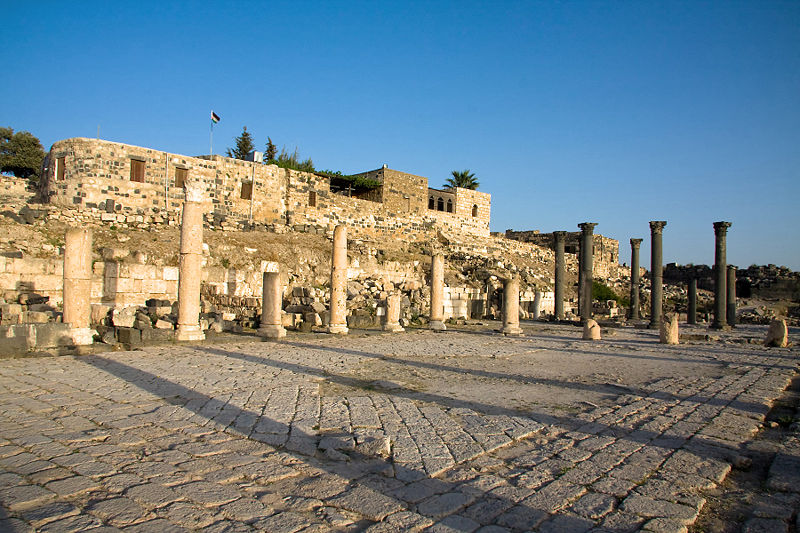Umm Qais
Umm Qais or Qays is a town in northern Jordan principally known for its proximity to the ruins of the ancient Gadara, also a former bishopric and present Latin Catholic titular see.
It lies in the Bani Kinanah Department and Irbid Governorate in the extreme northwest of the country, near Jordan's borders with Israel and Syria.
It is perched on a hilltop 378 metres 1,240 ft above sea level overlooking the Sea of Tiberias, the Golan Heights, and the Yarmouk River gorge.
Gadara was situated in a defensible position on a ridge accessible to the east but protected by steep falls on the other three sides.
It was well-watered, with access to the Ain Qais spring and cisterns.
A member of the Decapolis, Gadara was a center of Greek culture in the region, considered one of its most Hellenized and enjoying special political and religious status.
By the third century BC the town was of some cultural importance. The Greek historian Polybius describes Gadara as being in 218 BC the "strongest of all places in the region".
Nevertheless, it capitulated shortly afterwards when besieged by the Seleucid king Antiochus III of Syria. Under the Seleucids, it was also known as Antiochia or Antiochia Semiramis and as Seleucia .
The region passed in and out of the control of the Seleucid kings of Syria and the Ptolemies of Egypt. Gadara was captured and damaged by Alexander Jannaeus. In the early first century BC Gadara gave birth to its most famous son, Meleager.
He was one of the most admired Hellenistic Greek poets, not only for his own works but also for his anthology of other poets, which formed the basis of the large collection known as the Greek Anthology.
In 63 BC, when the Roman general Pompey placed the region under Roman control, he rebuilt Gadara and made it one of the semi autonomous cities of the Roman Decapolis, and a bulwark against Nabataean expansion.
But in 30 BC Augustus placed it under the control of the Jewish king Herod.
The historian Josephus relates that after King Herod's death in 4 BC Gadara was made part of the Roman province of Syria.
Gadara was the birthplace of the satirist Menippus c. 50 CE, a slave who became a Cynic philosopher and satirized the follies of mankind in a mixture of prose and verse. His works have not survived, but were imitated by Varro and by Lucian.
Josephus relates that in AD 66 at the beginning of the Jewish revolt against the Romans the country around Gadara was laid waste, So Vespasian marched to the city of Gadara. He came into it and slew all the youth, the Romans having no mercy on any age whatsoever.
He set fire to the city and all the villas around it. The Gadarenes captured some of the boldest of the Jews, of whom several were put to death and others imprisoned. Some in the town surrendered to emperor Vespasian, who placed a garrison there. The 2nd century AD Roman aqueduct to Gadara supplied drinking water through a qanat 170 km 110 mi long.
Its longest underground section, running for 94 km, is the longest known tunnel from ancient times. Gadara continued to be an important town within the Eastern Roman Empire, and was long the seat of a Christian bishop. With the conquest of the Arabs, following the Battle of Yarmouk in 636 it came under Muslim rule. Around 747 it was largely destroyed by an earthquake, and was abandoned.





